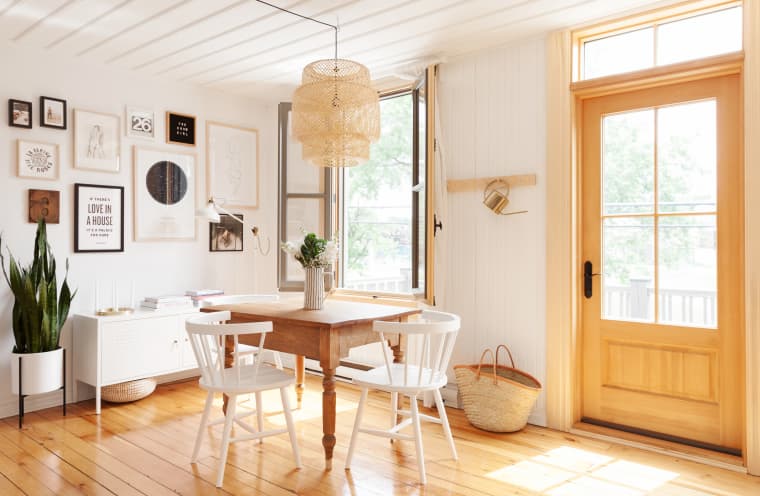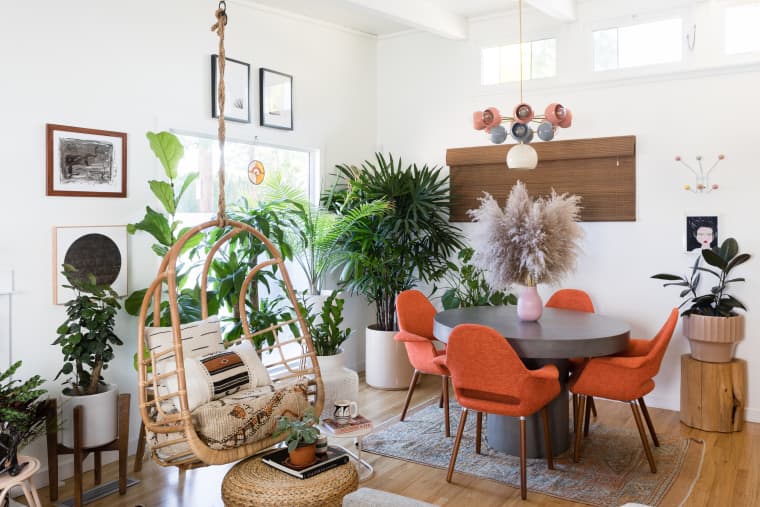Two Major Dining Area Layout Mistakes You’re Probably Making, According to Home Stagers

The dining area is no doubt a joyous space in your home. Whether you have a formal dining room with table and chairs to accommodate a large dinner party, or you’ve had to get a bit more creative to carve out a space to chow down, the way you arrange your furniture can make or break a gathering.
To find out how to maximize your dining area, we talked to professional home stagers about the common layout mistakes they often see, and how to correct them. Once you make your dining area functional and stylish, you’ll have no more excuses for eating in front of the TV. Here are their two top tips on how to optimize your dining area.
Overstuffing the space
When you’re working with a small space, it’s tempting to use every last inch of room available to fit as much seating as possible. But you have to remember that people need room to get in and out of their chairs—and to walk around, of course. You won’t have a very fun dinner party if people are literally confined to their seats the entire time. Plus, it will look and feel way too cramped if you put in more (and bigger) furniture than the space really allows.
“I like to ensure I have at least three feet all around the table so you can seamlessly pull chairs in and out,” says Diana Weinstein, an interior designer based in Glen Ridge, N.J. “When you are already tight on space, there are ways to ensure your flow is still comfortable with the appropriate size and scale of the table and chairs within it. You can get creative by utilizing corners and [adding] benches, which take up less room.”
Think you should push everything up against the wall to open up a tiny room? Beatrice de Jong of Opendoor warns against this strategy when you’re tight on square footage. She says it will backfire and actually make it look smaller. Instead, de Jong suggests putting the dining room table in the center, leaving space on all sides.

Having a lack of definition
Open concept living areas continue to reign supreme, but when your kitchen, dining, and living spaces flow one into the next, you also run the risk of it being unclear as to what actually constitutes the dining space. De Jong recommends using area rugs under the dining table and chairs to help define the space without having to build an actual barrier.
Weinstein suggests designating the dining area in an open-concept space with a rug as well as a statement light fixture, which will help set the mood and facilitate an intimate and inviting space when eating with guests. Plus, turning the light down low in other parts of an open-concept space and keeping low lighting on the table will create a natural spot to focus.
